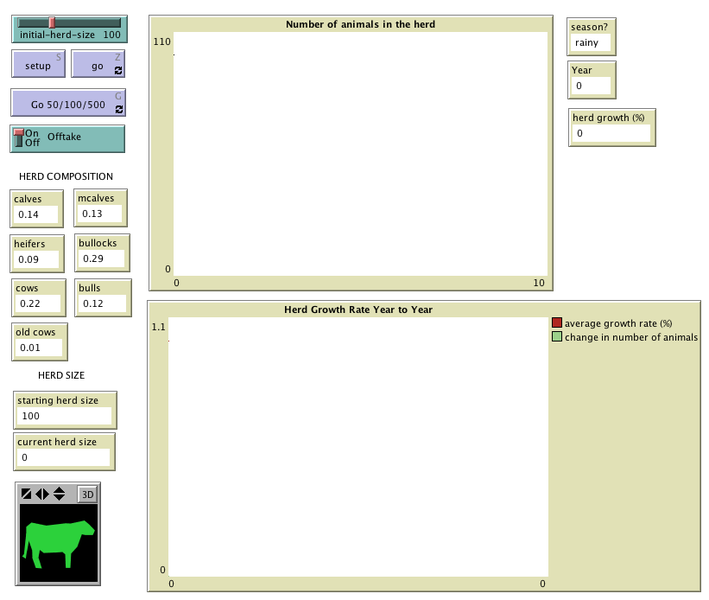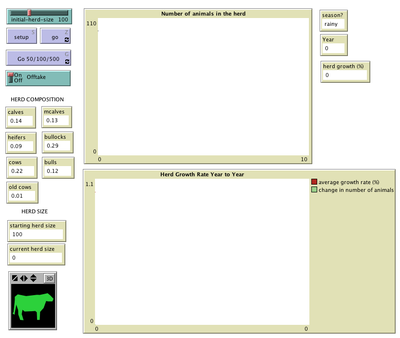Family Herd Demography 1.2.0
This Agent-Based Model (ABM) examines the dynamics of herd growth is part of a larger study that examines the coupled dynamics of herds and household demography in African pastoral systems. We used the model to examine the role of scale (herd size) stochasticity (in mortality, fertility, and off take rates) on herd growth in African pastoral systems. We derived the mortality, fertility, and offtake rates from a review of the literature. Our model is relatively simple but captures the key dynamics of the family herds in African pastoral systems in which herds consists of animals in different age and sex classes (e.g., calves, heifers, bullocks, cows, bulls) that each have different mortality and offtake rates. The model is non-spatial – we model only the herd and not the environment – and there are thus no density-dependent feedbacks. The model is built in NetLogo (version 5.05) (Wilensky 1999).

Release Notes
Version 1.0
